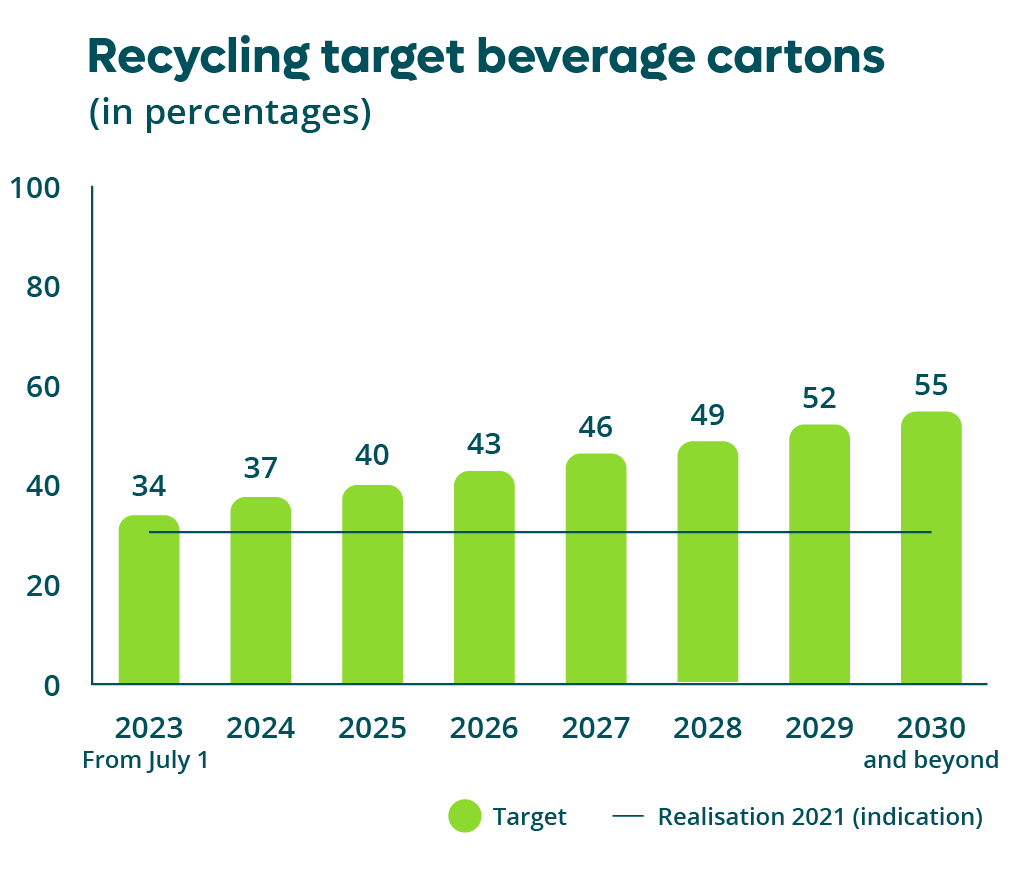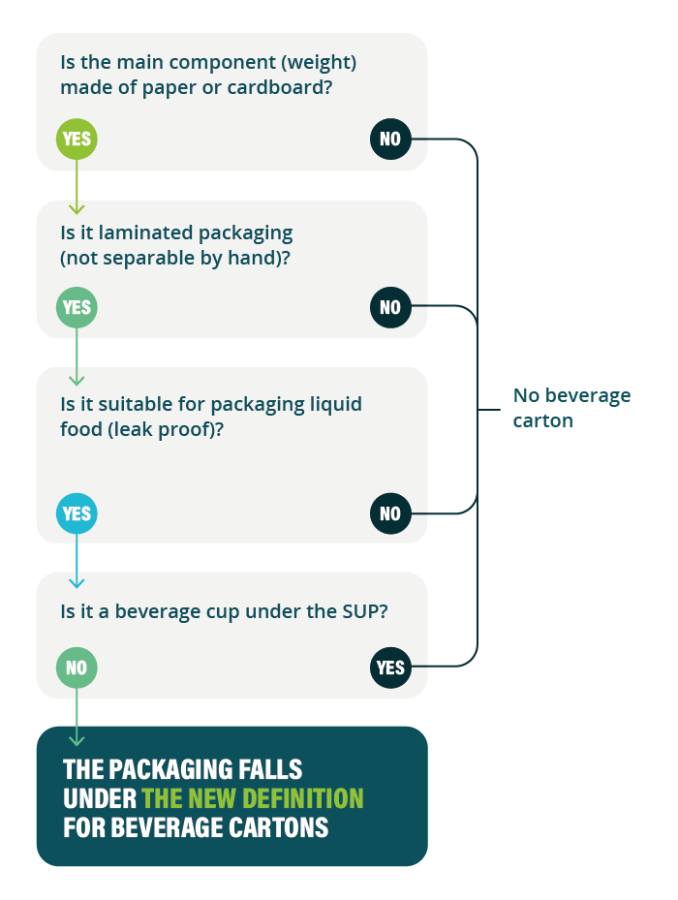Beverage cartons
The Dutch government has imposed a recycling target on beverage cartons from July 1, 2023, requiring more beverage cartons to be collected, sorted, and recycled.
The targets for the percentage of beverage cartons to be recycled have been set for the coming years. Below you find these percentages (source: indication for realization 2021, WUR report)

Definition beverage cartons
For 2023, the government has also expanded the legal definition of a beverage carton. This may impact your administration. This definition came into effect on July 1, 2023, but should be applied in the declaration for the entire calendar year 2023.
According to the European List of Standard Grades of Paper and Board for Recycling, it is possible to compose beverage cartons with only 50% paper and cardboard. In light of this, the description of the term "beverage cartons" has been adjusted.
Beverage cartons are now legally defined as: "packaging, suitable for packaging liquid food, excluding drinking cups, of which paper and/or cardboard is the main component."
The Packaging Waste Fund interprets this new legal definition as follows:
"Packaging" Laminated packaging where the paper and plastic parts can not be separated by hand.
"Suitable for packaging liquid food": For the application of this definition, it is not relevant whether the packaging actually contains a liquid food, but only whether the packaging is suitable for containing a liquid food. In case of doubt, it should be determined whether the packaging is (and remains) watertight.
"Excluding drinking cups": If a packaging falls under 'drinking cups' according to the Single-Use Plastics (SUP) regulations, it does not fall under the definition of beverage cartons, as drinking cups are explicitly excluded. The decision framework of the SUP currently determines what drinking cups are.
'Cups' with items such as dairy, ice cream, or yogurt are not classified as 'drinking cups' in the SUP but as food packaging. Cups with a powder that needs to be mixed with water are considered a 'drinking cup' according to the SUP."Of which paper and/or cardboard is the main component": Similar to other materials, the 'main component' is determined based on the weight of the various materials in the respective product packaging.
Below is a decision tree (in Dutch) to determine when a packaging is considered a beverage carton.

Some laminated packaging with paper and/or cardboard as the main component (excluding drinking cups) that is suitable for packaging liquid food, even if there is no actual liquid food inside, can still be considered a beverage carton. Examples include:
Liquid detergent in a laminated packaging: This packaging is suitable for packaging liquid food, with paper and/or cardboard as the main component. Despite detergent not being a food item, this packaging is still classified as a beverage carton.
Cat milk in a laminated packaging: A similar situation arises with cat milk in a laminated packaging. Even though cat milk is not a human food item, the packaging is considered a beverage carton because it is suitable for packaging liquid food, and paper and/or cardboard are the main components.
Packaging Administration
The legal changes have an impact on the information you need to provide to the Packaging Waste Fund for your 2024 declaration and 2023 report. This also means that your packaging administration may need to be adjusted. You can find more information on this page.
Note! The new legislation and definition came into effect on July 1, 2023, but should be applied in the declaration for the entire calendar year 2023.